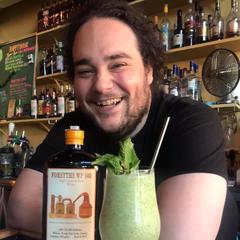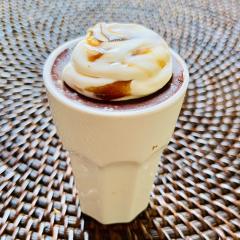Thanks for the shoutout, @blue_dolphin, glad to inspire you. I have that book and have made both the regular man'oushe dough and the "paper thin" marqouq dough, though used the latter dough also for mana'ish. A few of my thoughts on the book:
The author mentions many ways to make mana'ish, but really in Lebanon you have the oven and the saj, and that's about it. One thing to note is that much like pizza, the mana'ish made in the oven need very high temperatures and to are made essentially like a pizza, on a very hot floor with a peel and everything. I got a Baking Steel Griddle recently, and haven't used it for the white dough, but before that I used Kenji Lopez-Alt's cast iron skillet-broiler method in the oven and those turned out pretty well. I wouldn't bother doing them any other way. Here's the result:
For the Baking Steel I've been using it more like a saj, or as the author calls it, the convex metal disk, rather than like a pizza stone. I've tried all the doughs in the book on that, and done some experimenting myself. In my opinion, the marqouq dough, the ratio of 350:160 whole wheat to white flour is a bit high, I've been doing 50:50 lately, and I've also been using Atta flour, because I think standard whole wheat doesn't get thin enough. Also I think the recipes could stand a touch more water, but that could also be differences in dough. One thing to note is that across Lebanon, there are many, many different dough recipes, and mana'ish vary wildly from shop to shop. Anyway here's what I recall as the white flour dough on the Baking Steel, saj style.
Finally, I think the book is most useful for learning the culture of the man'oushe, as well as the myriad toppings and typical flavor combinations one sees. In Beirut options are typically zaatar, cheese, zaatar & cheese (often referred to just as "cocktail"), zaatar & labneh, kashkawan (kashkaval cheese), and maybe sometimes kishk, kafta, or lahme b'ajin. But at the main weekly farmer's market in Beirut, some of the man'oushe vendors have topping options that you never see at the bakeries, and I think the book does a good job exploring the depth and breadth of that.





